Speed Control of Magnetic Drive-Trains with Pole-Slipping Amelioration
Abstract
1. Introduction
- (1)
- Through a formal mathematical derivation, the paper firstly highlights that a MDT can be led into a pole-slipping regime with electromagnetic and load-torque excitations that are not individually greater than the maximum coupling torque. Moreover, the analysis also shows that the robustness of MDTs to actuation induced pole-slipping can be improved by decreasing the inertia ratio and reducing the bandwidth of designed controllers.
- (2)
- The kurtosis of electromagnetic torque is introduced to provide a pole-slipping detection criterion that doesn’t rely on the information of load-side position/speed. Moreover, a novel pole-slipping recovery is presented by transforming the pole-slipping regime into that of an on-load startup problem. The pole-slipping remedial strategy ensures MDTs recover from failures without the need for additional mechanical intervention/devices, as have been required in previous studies, to facilitate recovery.
2. Dynamics of MDTs
2.1. Experimental Rig
2.2. Dynamic Model
2.3. On-Load Startup and Criteria for MDTs to Maintain Normal Running
3. Controller Design and Pole-Slipping Amelioration
3.1. Virtually Increasing Using Acceleration Feedback
3.2. Controller Design and Parameter Optimization
3.3. A Criterion for Pole-Slipping Detection
3.4. A Strategy for Pole-Slipping Recovery
- At the onset of pole-slipping, reverse the running direction of the motor-side shaft and control the speed of it up to the maximum specification speed, then;
- Control the electromagnetic torque to be zero (); will consequently then decrease;
- As decreases, the motor-side shaft will re-synchronize with the load-side shaft (the variance of is now used as a synchronization detection indicator). The PI plus TD configuration can then be reconfigured to control the MDT to the reference speed.
4. Simulation and Experimental Results
5. Conclusions
Author Contributions
Funding
Institutional Review Board Statement
Data Availability Statement
Acknowledgments
Conflicts of Interest
Abbreviations
| Anti-resonance frequency (rad/s) | |
| The frequency of damped sine signal (rad/s) | |
| Load-side angular velocity (rad/s) | |
| Motor-side angular velocity (rad/s) | |
| Natural resonance frequency (rad/s) | |
| Load-side angle (rad) | |
| Motor-side angle (rad) | |
| (rad) | |
| Damping coefficient (kg/s), and | |
| Integer order | |
| Derivative order | |
| Load-side friction coefficient N·m/(rad/s) | |
| Motor-side friction coefficient N·m/(rad/s) | |
| Load-side inertia (·) | |
| Motor-side inertia (·) | |
| The equivalent value of motor-side inertia (·) | |
| Feedback coefficient | |
| Derivative gain | |
| Integral gain | |
| Proportional gain | |
| Linearized torsional stiffness (m/rad) | |
| p | Pole-pairs |
| R | Inertia ratio () |
| Coupling torque (m) | |
| Electromagnetic torque (m) | |
| Load-side friction torque (m) | |
| Motor-side friction torque (m) | |
| Load torque (m) | |
| The maximum coupling torque (m) |
References
- Montague, R.; Bingham, C.; Atallah, K. Servo control of magnetic gears. IEEE/Asme Trans. Mechatron. 2011, 17, 269–278. [Google Scholar] [CrossRef]
- Atallah, K.; Howe, D. A novel high-performance magnetic gear. IEEE Trans. Magn. 2001, 37, 2844–2846. [Google Scholar] [CrossRef]
- Wang, Y.; Filippini, M.; Bianchi, N.; Alotto, P. A Review on Magnetic Gears: Topologies, Computational Models and Design Aspects. IEEE Trans. Ind. Appl. 2019, 55, 4557–4566. [Google Scholar] [CrossRef]
- Rasmussen, P.O.; Andersen, T.O.; Jorgensen, F.T.; Nielsen, O. Development of a high-performance magnetic gear. IEEE Trans. Ind. Appl. 2005, 41, 764–770. [Google Scholar] [CrossRef]
- Jorgensen, F.T.; Andersen, T.O.; Rasmussen, P.O. The Cycloid Permanent Magnetic Gear. IEEE Trans. Ind. Appl. 2008, 44, 1659–1665. [Google Scholar] [CrossRef]
- Liao, X.; Bingham, C.; Zolotas, A.; Zhang, Q.; Smith, T. Servo Control of Drive-Trains Incorporating Magnetic Couplings. IEEE Trans. Ind. Appl. 2022, 58, 3674–3684. [Google Scholar] [CrossRef]
- Montague, R.; Bingham, C.; Atallah, K. Dual-observer-based position-servo control of a magnetic gear. IET Electr. Power Appl. 2011, 5, 708–714. [Google Scholar] [CrossRef]
- Bouheraoua, M.; Wang, J.; Atallah, K. Rotor position estimation of a pseudo direct-drive pm machine using extended kalman filter. IEEE Trans. Ind. Appl. 2016, 53, 1088–1095. [Google Scholar] [CrossRef]
- Bouheraoua, M.; Wang, J.; Atallah, K. Design and implementation of an observer-based state feedback controller for a pseudo direct drive. IET Electr. Power Appl. 2013, 7, 643–653. [Google Scholar] [CrossRef]
- Montague, R.; Bingham, C.; Atallah, K. Magnetic gear dynamics for servo control. In Proceedings of the MELECON 2010–2010 15th IEEE Mediterranean Electrotechnical Conference, Valletta, Malta, 26–28 April 2010; pp. 1192–1197. [Google Scholar]
- Bouheraoua, M.; Wang, J.; Atallah, K. Slip recovery and prevention in pseudo direct drive permanent-magnet machines. IEEE Trans. Ind. Appl. 2014, 51, 2291–2299. [Google Scholar] [CrossRef]
- O’Sullivan, T.M.; Bingham, C.M.; Schofield, N. High-performance control of dual-inertia servo-drive systems using low-cost integrated SAW torque transducers. IEEE Trans. Ind. Electron. 2006, 53, 1226–1237. [Google Scholar] [CrossRef]
- Saarakkala, S.E.; Hinkkanen, M. State-space speed control of two-mass mechanical systems: Analytical tuning and experimental evaluation. IEEE Trans. Ind. Appl. 2014, 50, 3428–3437. [Google Scholar] [CrossRef]
- Szabat, K.; Orlowska-Kowalska, T. Vibration Suppression in a Two-Mass Drive System Using PI Speed Controller and Additional Feedbacks—Comparative Study. IEEE Trans. Ind. Electron. 2007, 54, 1193–1206. [Google Scholar] [CrossRef]
- Montague, R.G.; Bingham, C.; Atallah, K. Magnetic gear pole-slip prevention using explicit model predictive control. IEEE/ASME Trans. Mechatronics 2012, 18, 1535–1543. [Google Scholar] [CrossRef]
- Han, J. From PID to active disturbance rejection control. IEEE Trans. Ind. Electron. 2009, 56, 900–906. [Google Scholar] [CrossRef]
- Ogata, K. Modern Control Engineering; Prentice Hall: Upper Saddle River, NJ, USA, 2010; Volume 5. [Google Scholar]
- Tepljakov, A. FOMCON: Fractional-order modeling and control toolbox. In Fractional-Order Modeling and Control of Dynamic Systems; Springer: Berlin/Heidelberg, Germany, 2017; pp. 107–129. [Google Scholar]
- Immovilli, F.; Cocconcelli, M.; Bellini, A.; Rubini, R. Detection of generalized-roughness bearing fault by spectral-kurtosis energy of vibration or current signals. IEEE Trans. Ind. Electron. 2009, 56, 4710–4717. [Google Scholar] [CrossRef]
- Hori, Y.; Sawada, H.; Chun, Y. Slow resonance ratio control for vibration suppression and disturbance rejection in torsional system. IEEE Trans. Ind. Electron. 1999, 46, 162–168. [Google Scholar] [CrossRef]

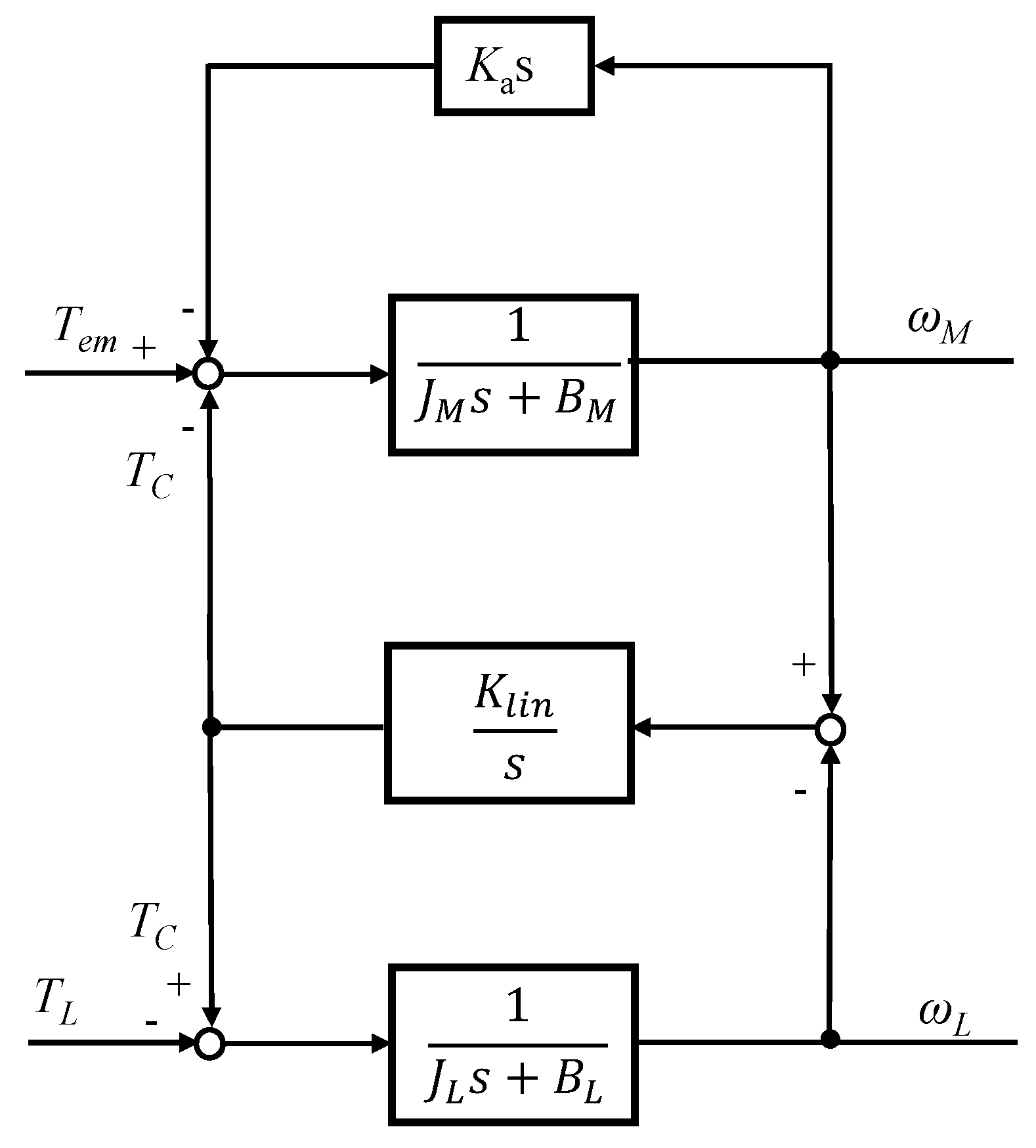

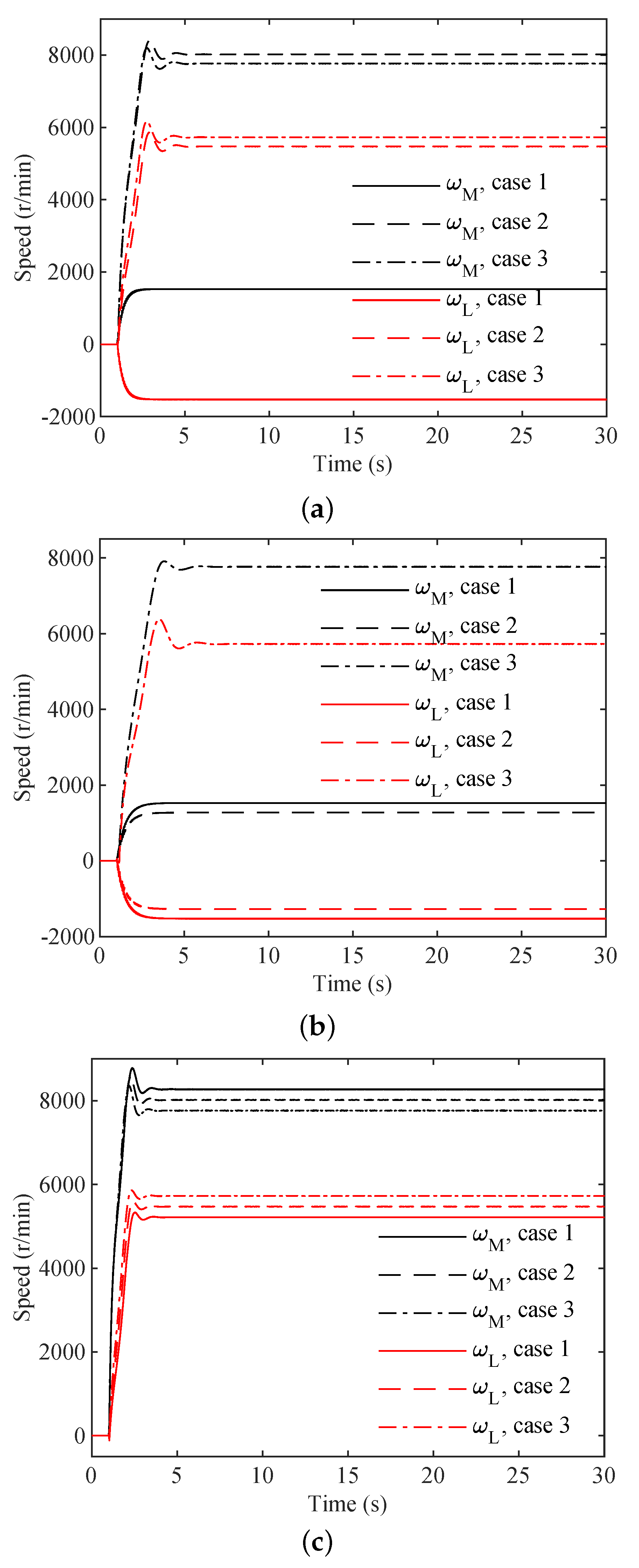
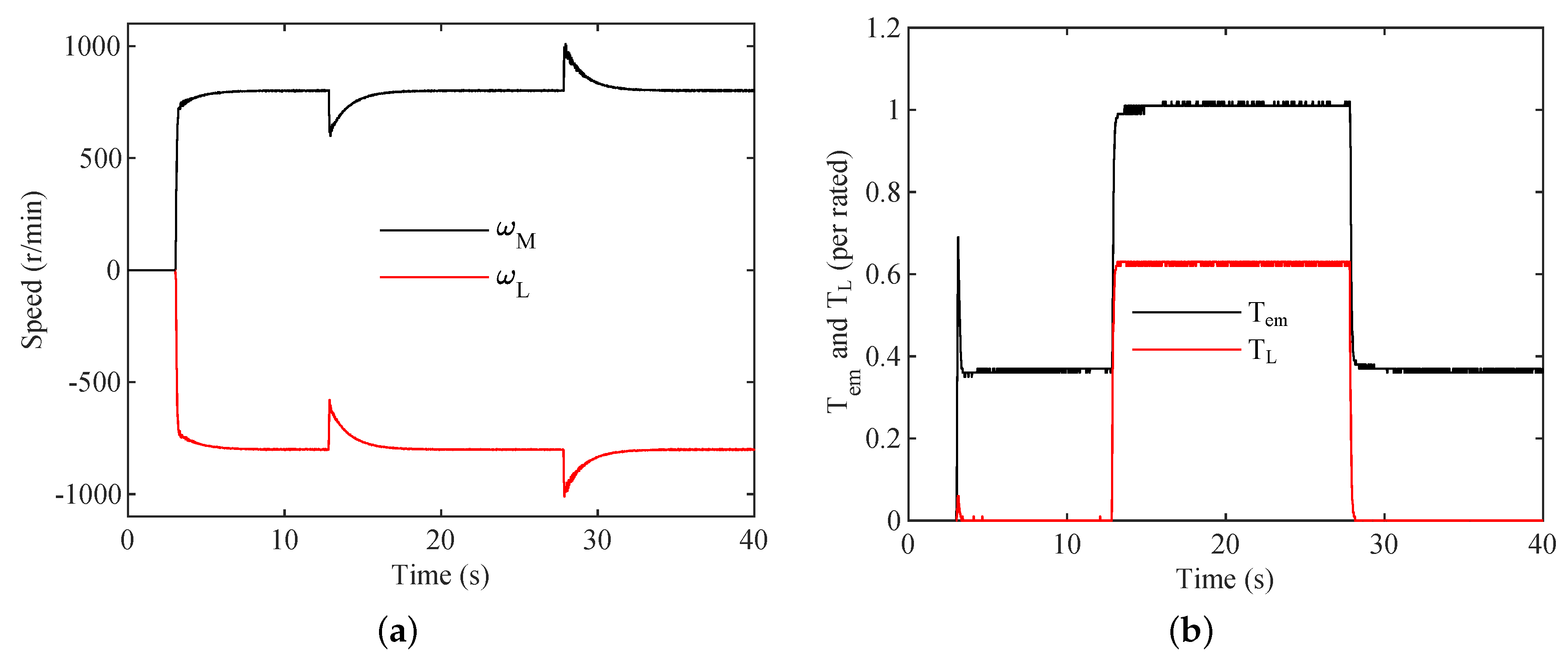
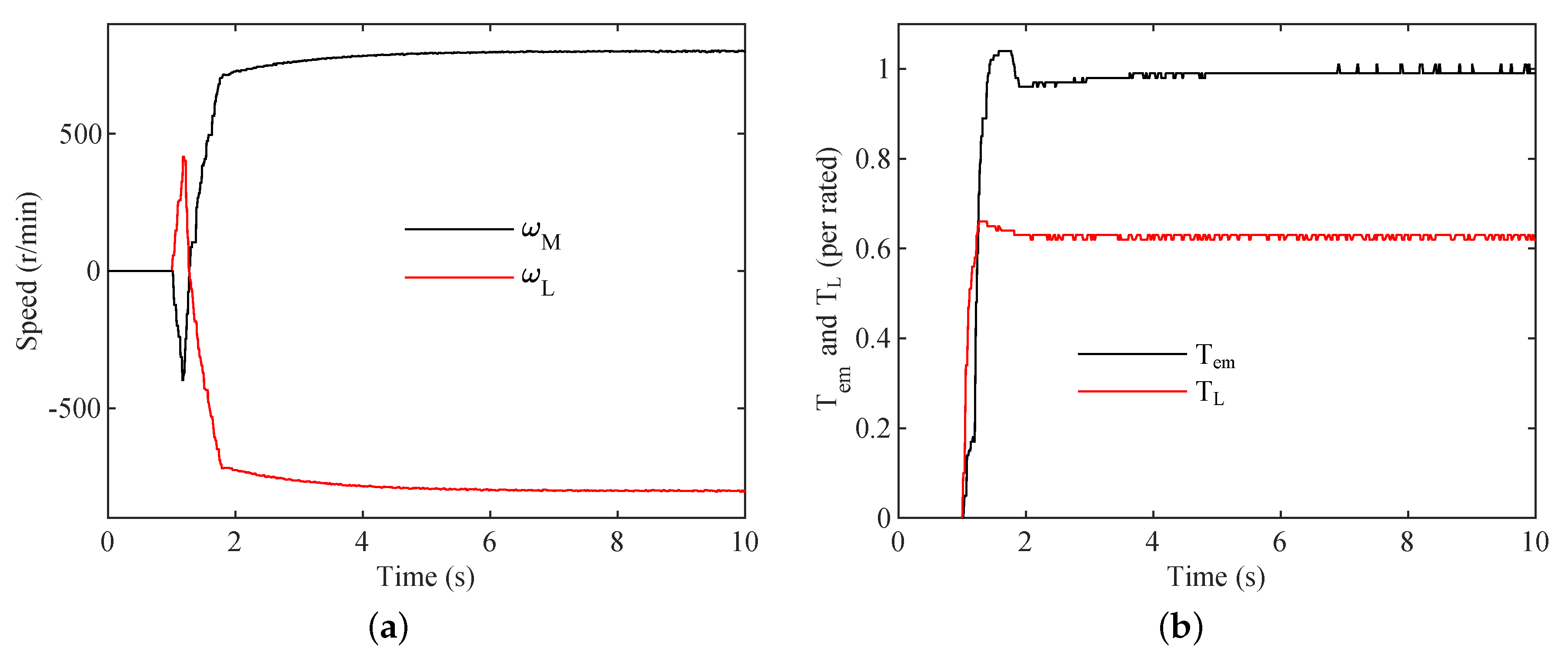
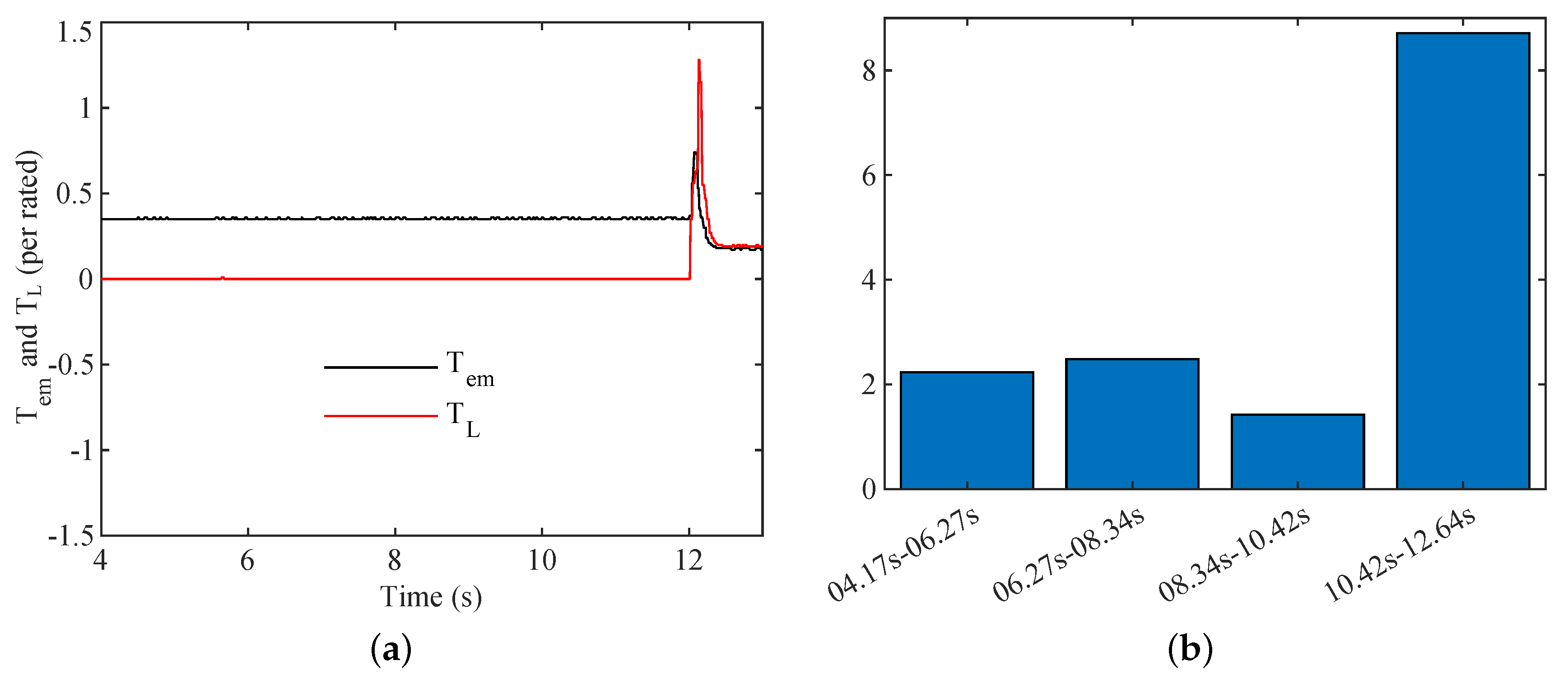
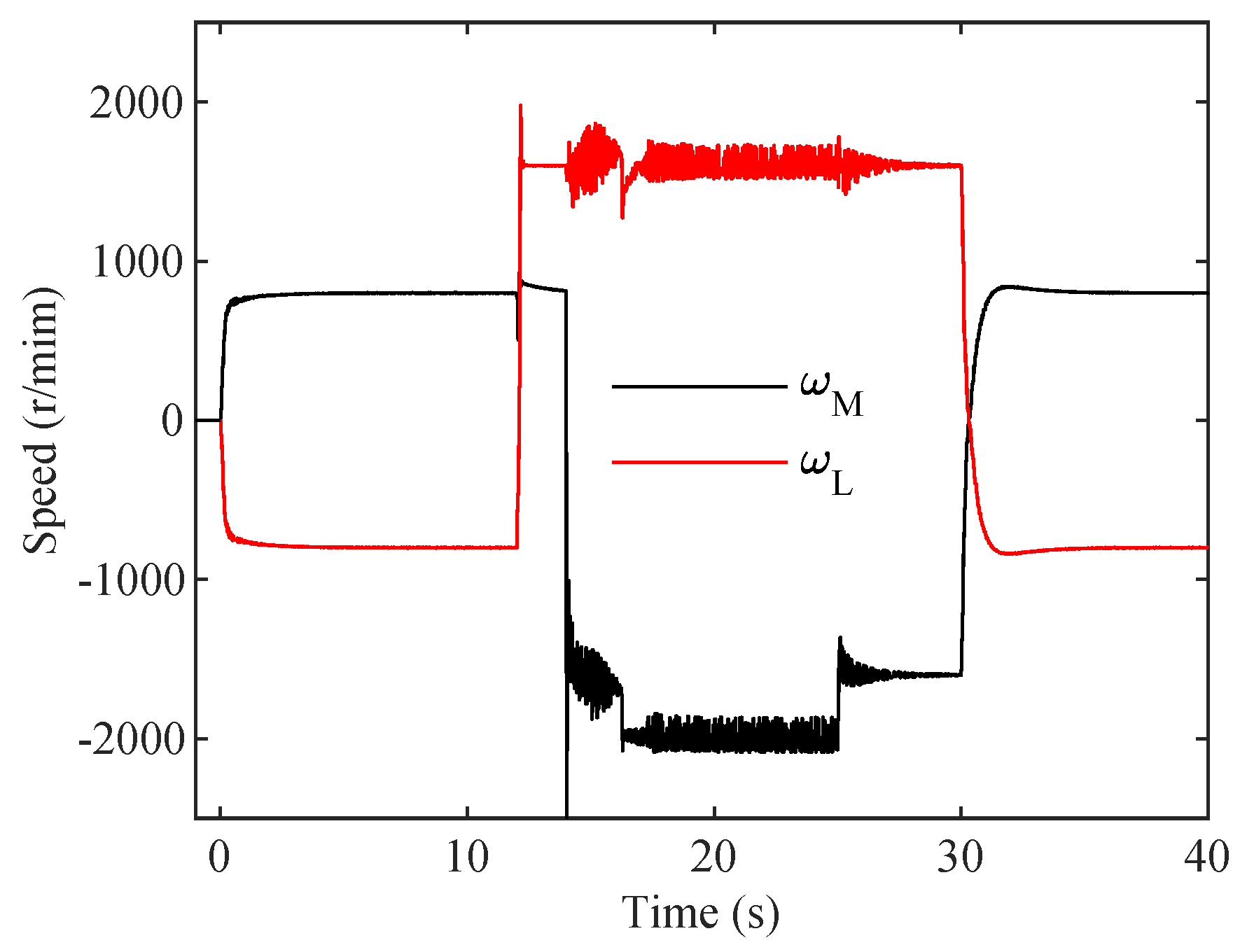
| Percentage (%) | 0 | 50 | 75 | 90 | 99 |
|---|---|---|---|---|---|
| (rad/s) | 126.0 | 119.0 | 103.0 | 71.1 | 48.4 |
| (rad/s) | 89.4 | 83.2 | 72.7 | 59.1 | 33.6 |
| Time (s) | 9–11 | 11–13 | 19–21 | 25–27 | 27–29 |
|---|---|---|---|---|---|
| 0.88 | 0.02 | 0.71 |
Publisher’s Note: MDPI stays neutral with regard to jurisdictional claims in published maps and institutional affiliations. |
© 2022 by the authors. Licensee MDPI, Basel, Switzerland. This article is an open access article distributed under the terms and conditions of the Creative Commons Attribution (CC BY) license (https://creativecommons.org/licenses/by/4.0/).
Share and Cite
Liao, X.; Bingham, C.; Smith, T. Speed Control of Magnetic Drive-Trains with Pole-Slipping Amelioration. Energies 2022, 15, 8148. https://doi.org/10.3390/en15218148
Liao X, Bingham C, Smith T. Speed Control of Magnetic Drive-Trains with Pole-Slipping Amelioration. Energies. 2022; 15(21):8148. https://doi.org/10.3390/en15218148
Chicago/Turabian StyleLiao, Xiaowen, Chris Bingham, and Tim Smith. 2022. "Speed Control of Magnetic Drive-Trains with Pole-Slipping Amelioration" Energies 15, no. 21: 8148. https://doi.org/10.3390/en15218148
APA StyleLiao, X., Bingham, C., & Smith, T. (2022). Speed Control of Magnetic Drive-Trains with Pole-Slipping Amelioration. Energies, 15(21), 8148. https://doi.org/10.3390/en15218148








